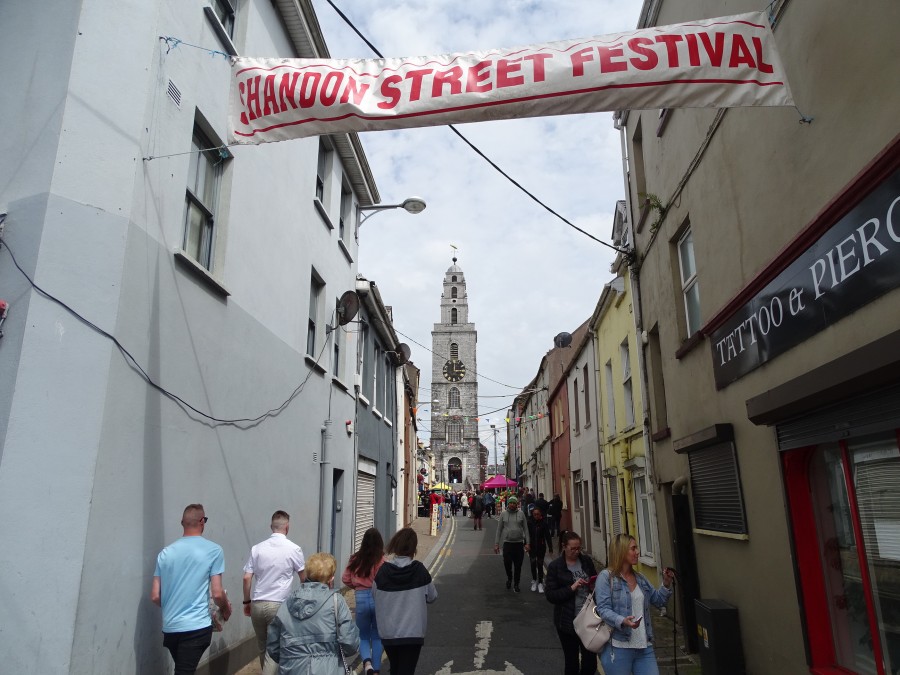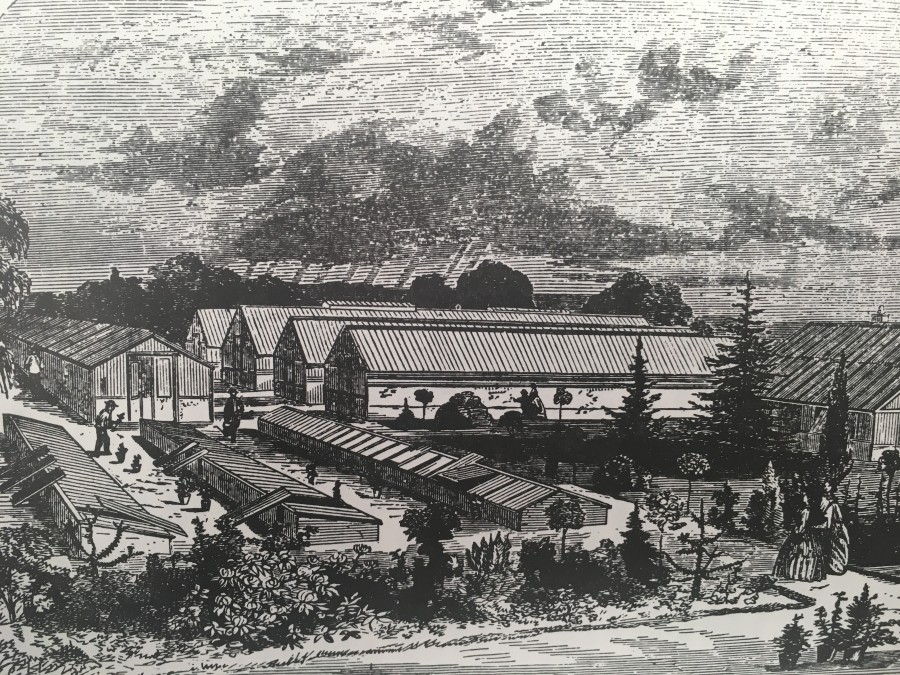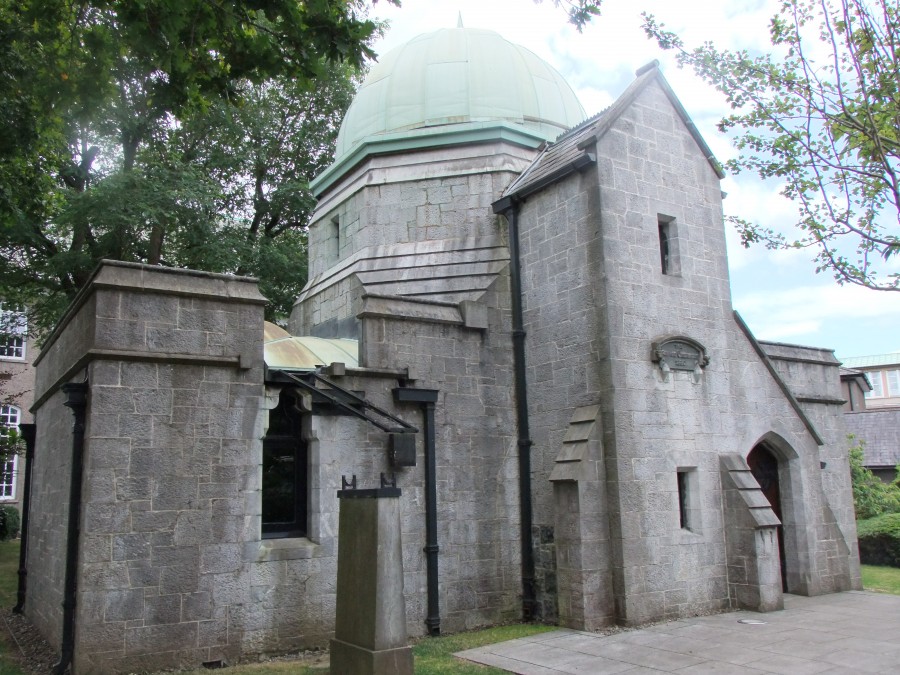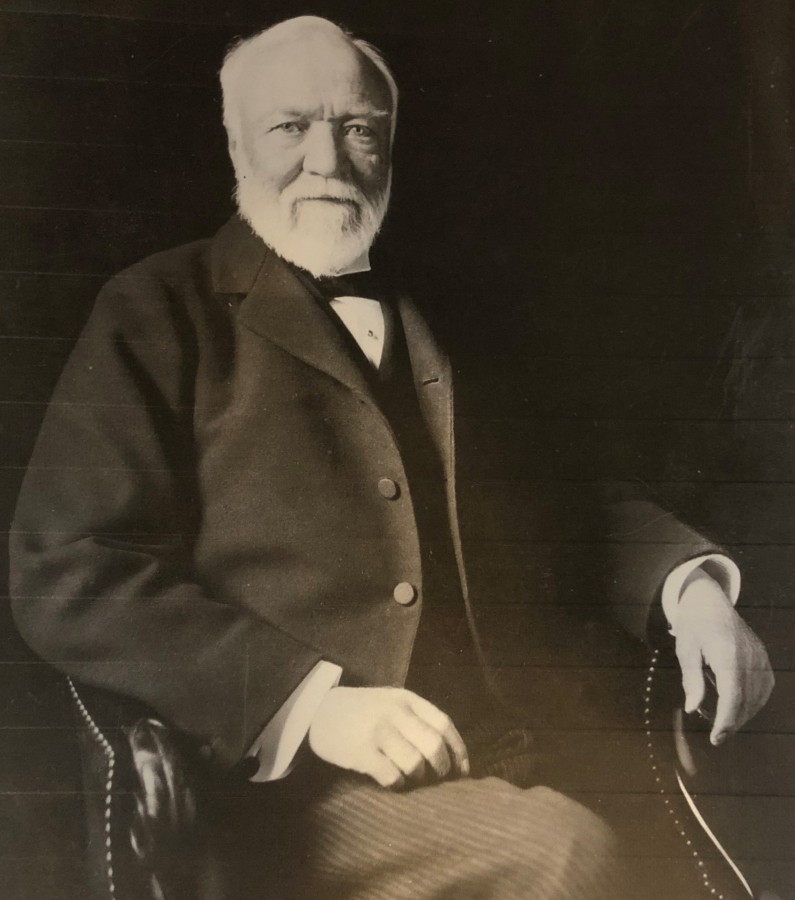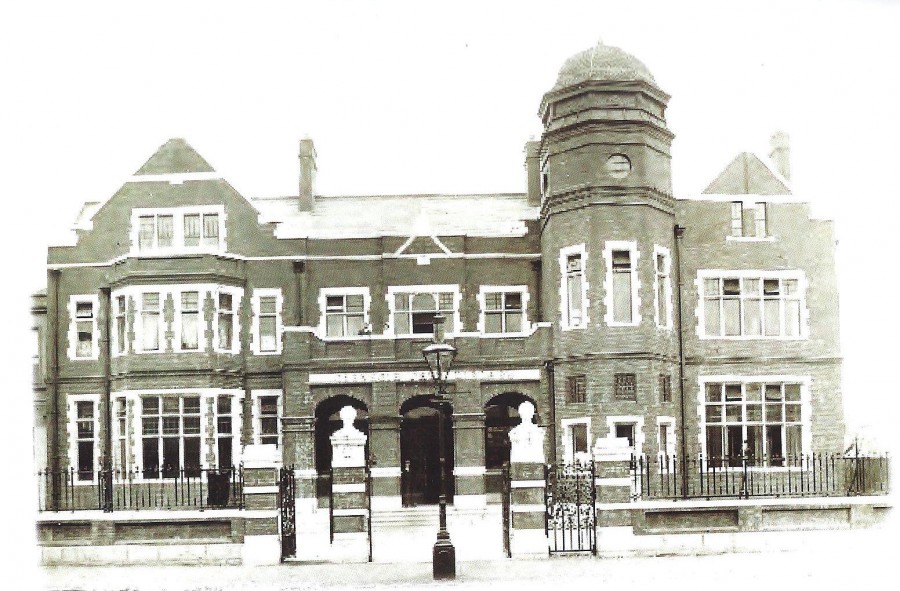Cork Heritage Open Day Looms
Cllr Kieran McCarthy will take part in Cork Heritage Open Day on Saturday 17 August through giving a tour of Cork City Hall. The open day is a unique event, which is held on the first Saturday of National Heritage Week. Cork Heritage Open Day will see over 42 buildings open their doors to the public for one day only. A series of guided walking tours, heritage events, exhibitions, talks and children’s events will also take place. All events are free.
Cork Heritage Open Day is organised by Cork City Council as part of Heritage Week in partnership with the National Heritage Council and with media sponsorship from Cork’s 96FM and The Echo.
A tour of City Hall by Cllr Kieran McCarthy will take place at 11am, which will include the architecture and history of the building and finishing with a visit to the Lord Mayor’s Chamber. This event is one of several building tours to be held on the 17 August. They are all free but some tours of buildings are ticketed. Please see www.corkheritageopenday.ie for more information or pick up a Cork Heritage Open Day brochure from the City’s libraries.
Cllr McCarthy noted; “City Hall is one of the most splendid and historic buildings of Cork. The current structure, replaced the old City Hall, which was destroyed in the ‘The burning of Cork’ in 1920. It was designed by Architects Jones and Kelly and built by Cork Company Sisks”. The foundation stone was laid by Eamonn de Valera, president of the Executive Council of the State on 9 July, 1932. The first meeting of the Council was held on 24 April, 1935 and the building was formerly opened by Eamonn de Valera on 8th September 1936.
Kieran has also posted his walking tours for National Heritage Week, 17-24 August online on his website under the “tours” section at www.kieranmccarthy.ie.
Kieran’s Our City, Our Town, 15 August 2019
Kieran’s Our City, Our Town Article,
Cork Independent, 15 August 2019
Kieran’s Heritage Week Tours, 17-24 August 2019
National Heritage Week is upon us again next week (19 – 26 August). It is going to be a busy week. For my part I have organised seven tours. These are all free and I welcome any public support for the activities outlined below. There are also brochures detailing other events that can be picked up from Cork City Hall and City libraries. If you are up the country on holidays, check out www.heritageweek.ie for the listings of national events.
Saturday 17 August 2019 – Historical Walking Tour of Cork City Hall with Kieran, 11am, ticketed (free, duration: 75 minutes; details at www.corkheritageopenday.ie)
Learn about the early history of Cork City Hall and Cork City Council; learn about the development of the building and visit the Lord Mayor’s Room. The current structure replaced the old City Hall, which was destroyed in the ‘burning of Cork’ in 1920. It was designed by Architects Jones and Kelly and built by the Cork Company Sisks. The foundation stone was laid by Eamon de Valera, President of the Executive Council of the State on 9 July 1932.
Sunday, 18 August 2019, Cork Through the Ages, An Introduction to the Historical Development of Cork City with Kieran; meet at the National Monument, Grand Parade, 6.45pm (free, duration: two hours)
Cork City city possesses a unique character derived from a combination of its plan, topography, built fabric and its location on the lowest crossing point of the river Lee as it meets the tidal estuary and the second largest natural harbour in the world. Indeed, it is also a city that is unique among other cities, it is the only one which has experienced all phases of Irish urban development, from circa 600AD to the present day. This tour explores the city’s earliest historical phases.
Monday 19 August 2018, Shandon Historical Walking Tour with Kieran; explore Cork’s most historic quarter; meet at North Gate Bridge, Shandon Street, 6.45pm (free, duration: two hours).
Tradition is one way to sum up the uniqueness of Shandon Street. Despite being a physical street, one can stroll down (or clamber up), the thoroughfare holds a special place in the hearts of many Corkonians. The legacy of by-gone days is rich. The street was established by the Anglo-Normans as a thoroughfare to give access to North Gate Drawbridge and was originally known as Mallow Lane. Shandon Street locals identify with the special old qualities of the street. Different architectural styles reflect not only the street’s long history but also Cork’s past.
Tuesday 20 August 2019, The Victorian Quarter; historical walking tour with Kieran of the area around St Patrick’s Hill – Wellington Road and McCurtain Street; meet on the Green at Audley Place, top of St Patrick’s Hill, 6.45pm (free, duration: two hours)
This is a tour that brings the participant from the top of St Patrick’s Hill to the eastern end of McCurtain Street through Wellington Road. The tour will speak about the development of the Victorian Quarter and its hidden and beautiful architectural heritage. All are welcome and any old pictures and documents that people have of these areas, please bring along.
Thursday 22 August 2019, The Lough and its Curiosities; historical walking tour with Kieran; meet at green area at northern green of The Lough, entrance of Lough Road to The Lough; 6.45pm (free, duration: two hours)
This new walking tour circles the Lough and explores the area’s origins and histories. In such a corner of the city, stories abound ranging from duels, ice-skating, market gardening, Victorian nurseries and legend making as well as housing and church sites.
Friday 23 August 2019, Douglas and its History, historical walking tour with Kieran in association with Douglas Tidy Towns; Discover the history of industry and the development of this historic village, meet in the carpark of Douglas Community Centre, 6.45pm (free, duration: two hours, circuit of village, finishes nearby).
The story of Douglas and its environs is in essence a story of experimentation, of industry and of people and social improvement; the story of one of Ireland largest sailcloth factories is a worthwhile topic to explore in terms of its aspiration in its day in the eighteenth century; that coupled with the creation of 40 or so seats or mansions and demesnes made it a place where the city’s merchants made their home it and also a an interesting place to study in terms of ambition shown in the landscapes that were created and which still linger in the surrounding landscapes of Douglas Village.
Saturday 24 August 2019, Fitzgerald’s Park: The People’s Park; historical walking tour with Kieran, meet at band stand (opp. Museum), 11am, note the morning time (free, duration: two hours)
Looking at the physical landscape of the Park, there are clues to a forgotten and not so familiar past. The entrance pillars on the Mardyke, the Lord Mayor’s Pavilion, the museum, the fountain in the middle of the central pond dedicated to Fr Mathew and timber posts eroding in the river were once parts of one of Cork’s greatest historical events, the Cork International Exhibitions of 1902 and 1903. Just like the magical spell of Fitzgerald’s Park, the Mardyke exhibitions were spaces of power. Revered, imagined and real spaces were created. They were marketing strategies where the past, present and future merged. The entire event was the mastermind of Cork Lord Mayor Edward Fitzgerald, after which the park got it name.
Captions:
1010a. Church Street, Shandon, during the recent Shandon Street Festival, 2019, one of the themes on Kieran’s upcoming walking tours for National Heritage Week.
1010b. The Lough Nurseries operated by the Hartland family, c.1867, one of the themes on Kieran’s upcoming walking tours for National Heritage Week.
Cllr McCarthy Announces his National Heritage Week Walking Tours
Douglas Road and Independent Cllr Kieran McCarthy has organised seven free historical walking tours for the upcoming National Heritage Week. The focus in the southern suburbs is on Douglas village and that of The Lough whilst in the northern suburbs. Shandon and the area of St Patrick’s Hill to MacCurtain Street will be focussed on. City Hall, Fitzgerald’s Park and the story of the Mardyke also feature. Cllr McCarthy noted; “these suburbs and sites possess really rich local histories from the early origins of Cork to historic views, big mansions, from Corporation social housing to philanthropic dwelling companies to buildings that define a district. There are hours and hours of exploration to be had from such sites; all add to the historical DNA, feel and sense of identity of these Cork suburbs”. The tours are listed below and all are free.
Saturday 17 August 2019 – A Tour of Cork City Hall, 11am, ticketed (free, part of Cork Heritage Open Day; details at www.corkheritageopenday.ie)
Sunday 18 August 2019, Cork Through the Ages; meet at the National Monument, Grand Parade, 6.45pm (free, two hours).
Monday 19 August 2019, Shandon Historical Walking Tour; meet at North Gate Bridge, Shandon Street side, 6.45pm (free, two hours).
Tuesday 20 August 2019, The Victorian Quarter; meet on the Green at Audley Place, top of St Patrick’s Hill, 6.45pm (free, two hours)
Thursday 22 August 2019, The Lough and its Curiosities; meet at green area at northern green of The Lough, entrance of Lough Road to The Lough; 6.45pm (free, two hours)
Friday 23 August 2019, Douglas and its History, in association with Douglas Tidy Towns; meet in the carpark of Douglas Community Centre, 6.45pm (free, two hours).
Saturday 24 August 2019, Park Stories, explore the history of Cork’s Mardyke; meet at band stand in park, opposite Cork City Museum in Fitzgerald’s Park, 11am (free, two hours).
January-July 2019 Back Issues of Our City, Our Town, Cork Independent
The back issues of my Our City, our Town column in the Cork Independent, which explored the period from 1916 to 1918 are on the index of my website, www.corkheritage.ie and the articles from this column from the last ten years are now online and accessible to read. Before that many are published in book format and the titles of these books can be viewed on the website. In addition, I post extra articles and pictures on my heritage facebook page, Cork Our City, Our Town or check out my twitter page at @cllrkmac.
January to July 2019 editions: http://corkheritage.ie/?page_id=4991
Kieran’s Our City, Our Town, 8 August 2019
Kieran’s Our City, Our Town Article,
Cork Independent, 8 August 2019
Cork Heritage Open Day, Saturday 17 August 2019
Cork Heritage Open Day and Heritage Week are looming – a kind of Christmas week – for a heritage fanatic like me. It is great to see the city’s local history and natural heritage being focussed on. Indeed as a city we need to celebrate it more publicly and more regularly.
For one day only, nearly 40 buildings open their doors free of charge for this special event. On Saturday 17 August, Members of the public are allowed a glimpse of some of Cork’s most fascinating buildings ranging from the medieval to the military, the civic to the commercial and the educational to the ecclesiastical. This event was greeted with great enthusiasm by building owners and members of the public alike in 2018 with an estimated c.24,000 people participating in the day.
The event showcases the many elements of Cork City’s rich heritage in a fun, family friendly way. The event is organised by Cork City Council as part of Heritage Week in partnership with the Heritage Council. This event is organised almost entirely on a voluntary basis with building owners, local historians and communities giving their time free of charge. The success of the event lies with the people behind the buildings who open their doors willingly every year to allow the public a glimpse of the amazing and unique built heritage of Cork City. Without the generosity of the building owners, this event would not happen.
It is always a great opportunity to explore behind some of Cork’s grandest buildings. With the past of a port city, Cork architecture is varied and much is hidden amongst the city’s narrow streets and laneways. Much of its architecture is also inspired by international styles – the British style of artwork pervading in most cases– but it’s always pays to look up in Cork and marvel at the Amsterdamesque-style of our eighteenth century structures on streets such as Oliver Plunkett Street or at the gorgeous tall spires of the city’s nineteenth-century churches.
Cork Heritage Open Day(.ie) is fifteen years in the making and with 40 buildings it is almost impossible to visit them all in one day. It takes a few goes to get to them all and spend time appreciating their physical presence in our city but also the often-hidden context of why such buildings and their communities came together and their contribution to the modern day picture of the city. The team behind the Open Day do group the buildings into general themes, Steps and Steeples, Customs and Commerce, Medieval to Modern, Saints and Scholars and Life and Learning – one can walk the five trails to discover a number of buildings within these general themes. These themes remind the participant to remember how our city spreads from the marsh to the undulating hills surrounding it, how layered the city’s past is, how the city has been blessed to have many scholars contributing to its development and ambition in a variety of ways and how the way of life in Cork is intertwined with a strong sense of place.
The trail Life and Learning is a very apt way to describe an important aspect of the city’s built architecture. The trail encompasses not only some of the amazing buildings on the western of the city, but also some of the most spectacular views. Admire the quadrangle of University College Cork, re-examine the Glucksman Gallery, gorge on the multitude of objects in Cork City Museum, and re-imagine life within the old Cork waterworks on the Lee Road.
The origins of University College, Cork (UCC) dates to the early half of the 1800s. UCC was founded under the provisions made by Queen Victoria to endow new Colleges in Ireland for the advancement of learning in Ireland. Under the powers given by this act the three Colleges of Belfast, Cork and Galway were incorporated on the 30 December 1845. Architects, Bengamin Woodward and Sir Thomas Deane adopted a perpendicular Gothic style. The main buildings were arranged around three sides of a quadrangle, with the lecture rooms on the west while the towered entrance, examination hall – Aula Maxima, and library were located in the north-east range. The college opened on 7 November 1849.
Sir Robert Kane became the first president of the college (1845-1873). His open-minded attitude took a stand against the traditionalist view that a university should be solely dedicated to the pursuit of liberal arts. He also had strong contacts with and beliefs in the importance of the social, industrial and economic life in the city.
One of the buildings on the campus open on Heritage Open Day is the Crawford Observatory dates from 1880. The University attained the Observatory through the donations of several benefactors. One of them, William Crawford, contributed £1,000 towards its construction and the acquisition of astronomical instruments. William Crawford was also to donate to the buildings of Berkeley Hall, known as the Honan Hostel. He also gave a large sum towards the building of the entrance on Western Road. The Observatory houses an equatorial telescope, one for which Howard Grubb, who created it, obtained a Gold Medal at the Paris Exhibition of 1900. The Observatory also hosts a Ciderostatic telescope and Spectroscope.
See www.corkheritageopenday.ie for more details.
Kieran’s Upcoming Heritage Week Tours:
Saturday 17 August 2019 – Historical Walking Tour of Cork City Hall, 11am, ticketed (free, part of Cork Heritage Open Day; details at www.corkheritageopenday.ie)
Sunday 18 August 2019, Cork Through the Ages; meet at the National Monument, Grand Parade, 6.45pm (free, two hours).
Monday 19 August 2019, Shandon Historical Walking Tour; meet at North Gate Bridge, Shandon Street, 6.45pm (free, two hours).
Tuesday 20 August 2019, The Victorian Quarter; meet on the Green at Audley Place, top of St Patrick’s Hill, 6.45pm (free, two hours)
Thursday 22 August 2019, The Lough and its Curiosities; meet at green area at northern green of The Lough, entrance of Lough Road to The Lough; 6.45pm (free, two hours)
Friday 23 August 2019, Douglas and its History, in association with Douglas Tidy Towns; meet in the carpark of Douglas Community Centre, 6.45pm (free, two hours).
Saturday 24 August 2019, Park Stories, explore the history of Cork’s Mardyke; meet at band stand in park, opposite Cork City Museum in Fitzgerald’s Park, 11am (free, two hours).
Captions:
1009a. Queen’s College Cork, by Robert Lowe Stopford, c.1850-1870 (source: University College Cork)
1009b. Crawford Observatory, UCC, present day (picture: Kieran McCarthy)
Kieran’s Facebook Page Link
On Facebook? Check out the Cllr Kieran McCarthy page.
https://www.facebook.com/cllrkieranmccarthy/?view_public_for=271299990379625
Lennox Robinson Award 100 Word Flash Fiction Award 2019
LENNOX ROBINSON AWARD
FREE ENTRY TO 31 AUGUST
The closing date for the Cllr Kieran McCarthy Lennox Robinson 100 Word flash fiction Award 2019 has been extended to 31 August due to the interest from writers all over Ireland.
The award aims to remember the Douglas born playwright and Abbey Theatre director Lennox Robinson who spent his formative years living in Ballymoney House near Ballineen in County Cork.
The 100 word short story has to be linked in some way to the work of Lennox Robinson who was one of Ireland’s leading cultural figures.
The Award is open to writers both nationally and internationally. Submissions remain open until 31st August 2019 There is no entry fee and submissions, not more than 100 words must be emailed to douglaswriters1@gmail.com.
Ronnie McGinn, chairman of the Douglas Writers the event organisors said today that a short list will be published at the end of September.
The 100 euro prize will be presented to the winner by Cllr MacCarthy at a special event in the Douglas Library on Thursday 17th October 2019.
Douglas Flood Relief Works
Cork City Council, in collaboration with Cork County Council and the Office of Public Works (the funding authority for the scheme), intends to undertake engineering works along the Ballybrack Stream, Grange Stream and Tramore River with the objective of reducing the risk of flooding in the areas of Douglas.
The Scheme is designed to provide protection to the design standard of 1 in 100 year rainfall/1 in 200 year tidal event.
McGinty & O’Shea Ltd has been awarded the works contract (€5.5m) for construction of the Douglas Works package and the works are due to commence in August 2019.
The works contract has been divided into 5 areas as shown in Plate 1 below. With the exception of Area 1, works in rivers are constrained to the months of May to September (inclusive) as required by the planning permission and Inland Fisheries Ireland. Also, following the principle that the works cannot increase the flood risk during the construction phase, instream works will start downstream and work upstream.
The works will be constructed on private property in a number of locations. The project team have been liaising with these property owners over the last 2 years to facilitate the construction of the works under agreement.
The following table gives an indication of the types of construction in the relevant areas. All time frames are provisional and subject to clarification by the Contractor.
General Construction Activities.
Area 1 – St Patrick’s Mills
Construction of flood defence wall.
Likely timeframe for Construction – Winter 2019
Area 2 – Douglas Community Park
Construction of flood defence wall and river bank stabilisation. River widening and regrading. Hard and soft landscaping.
Likely timeframe for Construction – Autumn 2019
Area 3 – Church Rd
Replace culvert, river widening and flood defence walls.
Likely timeframe for Construction – Summer 2020
Area 4 – Ravensdale and Ballybrack woods
Replace access bridges, river widening and flood defence walls. Course screen in Ballybrack woods.
Likely timeframe for Construction – Summer/ Autumn 2020
Area 5 – Donnybrook Commercial centre.
Replace culvert, river regrading and course screen.
Likely timeframe for Construction – Autumn 2020
Works to Douglas Community Park:
It is intended that works commence in Douglas Community Park in the August 2019, however this is to be confirmed by the Contractor.
The Contractor will install safety barriers along the west edge of the cycle track and this half of the park (between the cycle track and the river) will be out of public use for the duration of the works in Area 2. It is estimated that the works to the park will take approximately 5-6 months to complete.
Due to the extensive planned works to Douglas Community Park and Church Road, the opportunity was taken by Cork County Council Architects Department to deliver a public amenity outcome from the Flood relief works. This was as envisioned in the Douglas Land Use Transport Strategy 2013 (DLUTS) to deliver public Realm outcomes for the community.
The river will be visually opened to the park to create a pleasant riverside walking and viewing areas which are accessible and safe. Quality materials and bespoke furniture will be incorporated to provide place making and flexible use of public space for community events.
The widening of the river and the replacement of the left bank with a gabion wall (on private lands) reduces the space allowable for replanting of trees. To account for this, relocation of proposed trees and scrubs was designed in cooperation with a Landscape Architect Consultant to create screening and sheltering at appropriate locations. Where possible, existing trees will be retained and incorporated into the revise layout plan. Selections of scrubs and grasses are included to compliment the tree planting.
Compensation replanting will also be provided in other areas of the community to account for any net loss of trees to the park/Church road. The location of these areas will be identified in consultation with Cork City Council Parks Department and the Tidy Towns Association.
An information poster has been designed to inform the local community and park users of the project and the proposed finish for the park.
For more information on the development of the scheme please visit www.DouglasFRS.ie
Kieran’s Our City, Our Town, 1 August 2019
Kieran’s Our City, Our Town Article,
Cork Independent, 1 August 2019
Tales from 1919: Death of a Library Philanthropist
